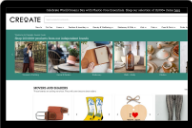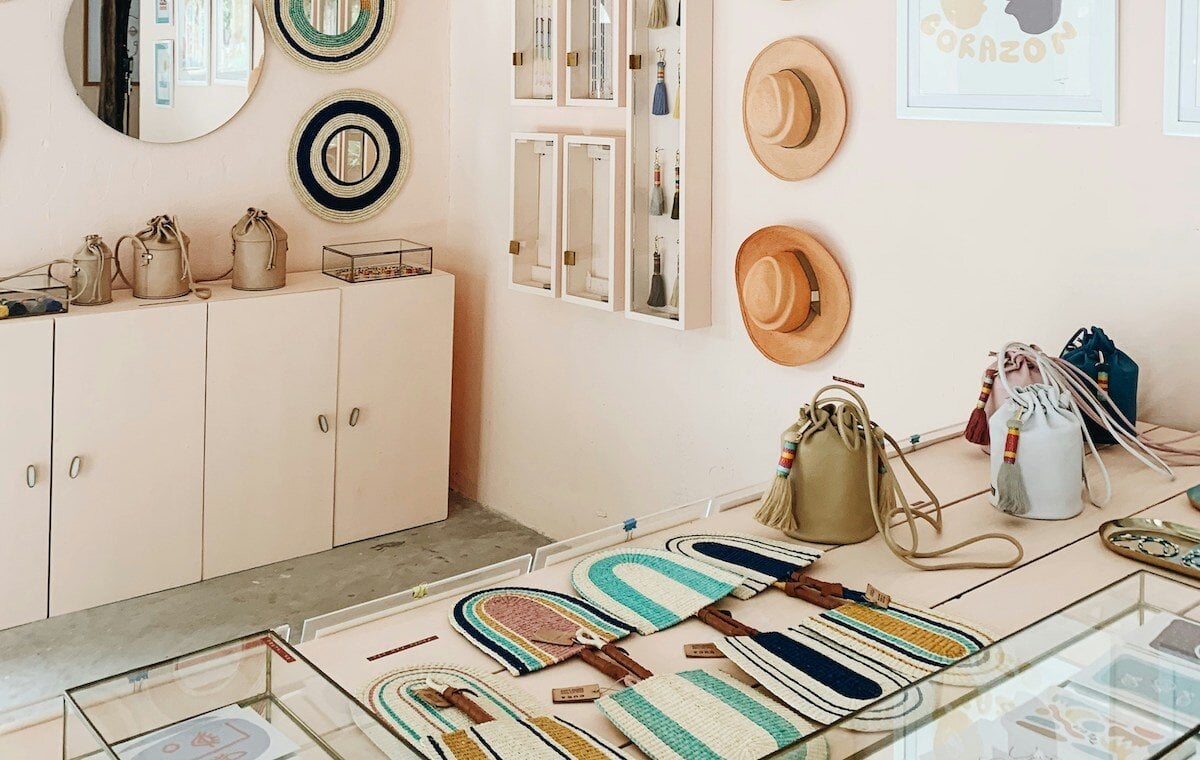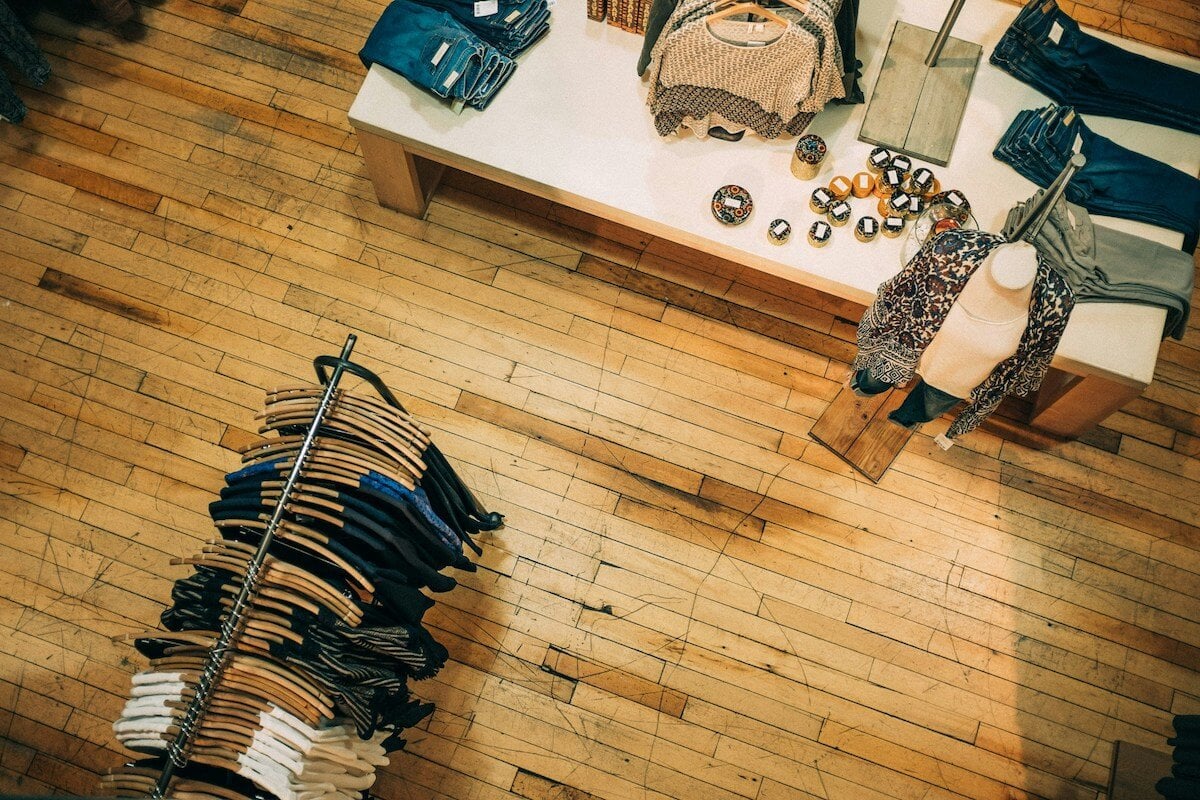
A planogram is a detailed diagram showing which products should go where in your store. It forms part of your wider visual merchandising plan.
It’s the next step up from creating a retail store layout — it goes into far more detail, and is far more data-driven.
Planograms help optimise sales, profit, sell-through rate and inventory management. And they’re also important for making sure different branches of the same store keep a consistent look and feel, where applicable.
Examples of a planogram
Here are a few real life examples of planograms to give you a better sense of what they’re about:

Image credit: ReadySet VR

Image credit: Explorer Research
Do I actually need to create a planogram?
If we’re being honest, creating a full planogram like the ones above is probably overkill for our smaller independent retailers. But for larger retailers, department stores, supermarkets and smaller grocery stores, they’re a very useful tool.
Just because we don’t see a planogram as essential for smaller retailers, that doesn’t mean you can’t take a strategic approach to your product mix and store setup.
Instead of creating a planogram, why not try:
- Designing a retail store layout that works for your space
- Learning how to merchandise your store both appealingly and strategically
- Reviewing your assortment strategy
- Planning out your calendar of shop window designs
💡 Top tip: When we spoke to visual merchandising expert Sarah Manning, she recommended updating your shop window display every four weeks to keep it fresh and engaging for those passing by.
5 Types of planograms
There are six different approaches to ‘planogramming’, or ‘visual product placement’, as it’s also known.
1. Horizontal product placement
With horizontal product placement, you place similar products from different brands side by side on the same shelf, or at the same level.
2. Vertical product placement
By contrast, with vertical product placement, you arrange similar products by different brands vertically instead, so they each sit on a different level.
💡 Top tip: Customers generally prefer to scan horizontally to find the product type, and then vertically to find the specific version of that product they’d like to buy.
3. Block product placement
This simple technique involves clustering similar products together in one block, without much attention given to which are the more valuable products.
4. Product placement based on status or market share
With this technique, you place products from better-known brands in the best spots. Eye level is considered ‘buy level’, so products from popular brands would be placed as close to this level as possible.
5. Product placement based on margin
This planogramming technique involves giving priority to products with a higher margin, and placing these in the prime spots (including at eye level).
Why use a planogram?
Official planograms aren’t necessary for every retail business. But when they are, here’s how they help:
1. Optimise your layout for profit
A well-made planogram takes all of your data — footfall and traffic flow, sell-through rate, sales volume, price, margin and more — to give you a blueprint for maximising profit across your assortment. Because when it comes to making a profit, not all products are created equal.
2. Create consistency across different stores
While the layout may be slightly different, there’s something reassuring (not to mention convenient) about being able to pop into any branch of a Tesco’s and locate what you need to cook dinner that evening.
And that doesn’t happen by accident. Every store has a different manager, but they’ll be working from a planogram that both optimises their store for the shape and location, but also keeps it consistent with other branches.
3. Craft a better customer experience
Yes, planograms are there to help retailers turn a bigger profit — but they’re also there to help customers find what they need more easily. When customers have a convenient shopping experience with you, they’re more likely to return.
4. Operate more efficiently
A good planogram should be easy for anyone in your team to follow, meaning no miscommunication as different people come on shift, and no time wasted wondering what to put where.
So, how do you make one?
Okay, so you think a planogram may be worth making. How do you go about it?
1. Employ the services of a planogrammer
Yes, they do actually exist! A planogrammer (or ‘planogram specialist’) will come to your store and observe customer behaviour and browsing patterns, as well as closely scrutinising your sales data, to produce a detailed planogram that you can put into action.
It’s worth noting that, as in any industry, people may provide a similar service under a different name, such as retail merchandiser or merchandising consultant, or product placement expert. So always do your research and make sure you’re completely clear on what you’re getting before you invest.
2. Use a planogram software
If you’d rather give it a go yourself, dedicated planogram software exists for exactly that. Input data about your space and products, and the software will help you build out your own plan of what to put where. While it will take longer to set up initially, planogram software could be a better option if you frequently sub items into your assortment. The software should make it easy for you to update the existing plan with new stock.
Some retailers also choose to DIY their planogram with Adobe Illustrator, or even a modified Excel sheet.
FAQs
What’s the difference between a planogrammer and a merchandiser?
There’s plenty of overlap between the two roles, and — as with all job titles — the role itself may be a little fluid. But essentially the difference is that a planogrammer is concerned with building a detailed plan of which products to put where in order to maximise profit. A merchandiser, while also conscious of the impact of product placement on profit, is also much more concerned with how products look when displayed, how the storefront looks and entices people into the store, and the general feel of the shop too.
Is it hard to read a planogram?
When done well, a planogram should be easy for anyone to follow, with clear instructions and accompanying diagrams that remove any guesswork from the process.
What is the acronym for planogram?
Planogram is sometimes shortened to the acronym ‘POG’. We feel like this is one acronym too far, which is why we left the full version in this guide.
What’s the most important part of creating a planogram?
When you create your planogram, take the time to really understand your customers, what they want from you, and how they move through your shop. At the end of the day, your plan is there to serve them the products they want.








